 (2022)
(2022)Chapter 6: HR machine learning in recruiting
In: Handbook of Research on Artificial Intelligence in Human Resource Management, Cheltenham, UK: Edward Elgar Publishing, 2022, S. 105–126, Cheltenham, UK
Laumer, S., Maier, C., and Weitzel, T.
 (2022)
(2022)
Chapter 6: HR machine learning in recruiting
In: Handbook of Research on Artificial Intelligence in Human Resource Management, Cheltenham, UK: Edward Elgar Publishing, 2022, S. 105–126, Cheltenham, UK
Hund, A., Diel, V., and Wagner, H.
(2021)
Recombining Layers of Digital Technology: How Users Create and Capture Value
In: Ahlemann F., Schütte R., Stieglitz S. (eds) International Conference on Wirtschaftsinformatik (WI 2021) : Innovation Through Information Systems. Lecture Notes in Information Systems and Organisation (48). Cham: Springer, pp. 259-274
Meiser, S., and Beimborn, D.
 (2020)
(2020)
Innovation in Outsourcing : An Empirical Analysis of Outsourcing Vendors’ Innovation Approaches
In: Information Systems Outsourcing: The Era of Digital Transformation
Kloppenburg, M., Kettenbohrer, J., Beimborn, D., and Bögle, M.
 (2018)
(2018)
Leading 20,000+ Employees with a Process-Oriented Management System: Insights into Process Management at Lufthansa Technik Group
vom Brocke J., Mendling J. (eds) Business Process Management Cases. Management for Professionals. Springer, Cham: p.505-520
Fischbach, K., Overhage, S., Staake, T., and Weitzel, T.
(2016)
Einleitung
in Benker, T.; Jürck, C.; Wolf, M. (Hrsg.): Geschäftsprozessorientierte Systementwicklung. Von der Unternehmensarchitektur zum IT-System. Springer, Berlin 2016, S. 1-7.
Dugan, C., and Laumer, S.
 (2015)
(2015)
Social Image Research in the Age of Selfies
in 15th IFIP TC 13 International Conference, Bamberg, Germany, September 14-18, 2015, Proceedings, Part IV
Weinert, C., Maier, C., Laumer, S., and Weitzel, T.
 (2015)
(2015)
Controlling der Rekrutierung: Erhebung von Kennzahlen entlang des Recruiting-Prozesses
in Praxishandbuch Controlling, W. Becker and P. Ulrich (eds.), Wiesbaden: Springer Fachmedien Wiesbaden, pp. 1-14
Kettenbohrer, J., Kloppenburg, M., and Beimborn, D.
 (2015)
(2015)
Driving Process Innovation: The Application of a Role-Based Governance Model at Lufthansa Technik
In: vom Brocke, J.; Schmiedel, S. (eds.) (2015): BPM - Driving Innovation in a Digital World, Management for Professionals; Springer International Publishing Switzerland: p.275-286
Wagner, H., and Moos, B.
(2014)
Knowledge Management
in: Cooper, C. (ed.): Wiley Encyclopedia of Management, 3rd Edition, Vol. 6, Hoboken, NJ: Wiley
Eckhardt, A., Laumer, S., and Vornewald, K.
 (2013)
(2013)
Bewertung von Self- und E-Assessments durch Kandidaten und Unternehmen
In: Diercks, J. and Kupka, K. (eds.): Recrutainment: Spielerische Ansätze in Personalmarketing und -auswahl, Springer Gabler Verlag, Wiesbaden, 19-32
Illig, S., Wagner, D., Suchan, C., Leunig, B., and Frank, J.
 (2012)
(2012)
Analyse der Flexibilität von Informationssystemen am Beispiel des Virtuellen Weiterbildungsstudienganges Wirtschaftsinformatik (VAWi)
In: Suchan, C. and Frank, J. (eds.): Analyse und Gestaltung leistungsfähiger IS-Architekturen, Springer Gabler Verlag, Berlin, 187-199.
Wiesinger, A., Beimborn, D., and Weitzel, T.
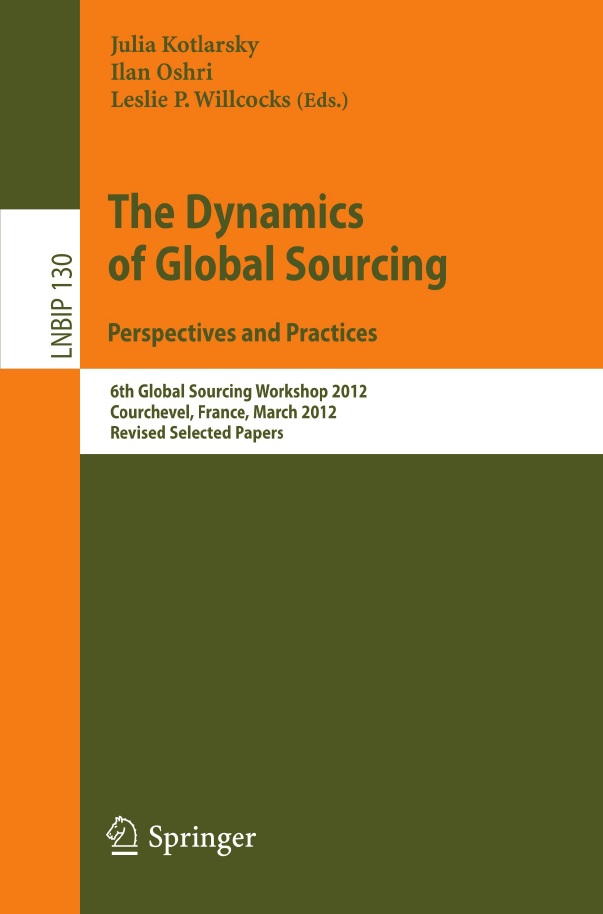 (2012)
(2012)
How Do Planned and Actual Interaction Structures Differ in Global Outsourcing Arrangements?
In: Kotlarsky, J., Oshri, I., and Willcocks, L. P. (eds.): The Dynamics of Global Sourcing: Perspectives and Practices, Springer Verlag, Berlin, 20-38.
Weitzel, T., Eckhardt, A., Laumer, S., and von Stetten, A.
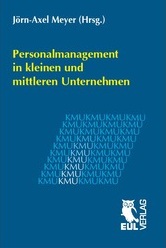 (2012)
(2012)
Personalbeschaffung im deutschen Mittelstand - Eine empirische Analyse des Status quo
In: Meyer, J.-A. (ed.): Personalmanagement in kleinen und mittleren Unternehmen, JOSEF EUL VERLAG, Lohmar, 131-157. Erhältlich unter: http://www.amazon.de/Personalmanagement-kleinen-mittleren-Unternehmen-KMU-Forschung/dp/3844101462/ref=sr_1_1?ie=UTF8&qid=1339675191&sr=8-1
Laumer, S., and Eckhardt, A.
 (2012)
(2012)
Why Do People Reject Technologies: A Review of User Resistance Theories
in: Dwivedi, Y.K., Wade, M.R., and Schneberger, S.L. (eds.): Information Systems Theory - Explaining and Predicting Our Digital Society, Vol. 1; in: Integrated Series in Information Systems, Vol. 28, 63-86, DOI: 10.1007/978-1-4419-6108-2_4. Online unter: http://www.springerlink.com/content/978-1-4419-6107-5/#section=960280&page=1
Maier, C., Laumer, S., and Eckhardt, A.
 (2011)
(2011)
Technology Adoption by Elderly People - An Empirical Analysis of Adopters and Non-Adopters of Social Networking Sites
In: Heinzl, A., Buxmann, P., Wendt, O., and Weitzel, T. (eds.): Theory-Guided Modeling and Empiricism in Information Systems Research, Physica-Verlag, Heidelberg, 85-110. Erhältlich unter: http://www.amazon.de/Theory-Guided-Modeling-Empiricism-Information-Research/dp/3790827800/ref=sr_1_1?ie=UTF8&qid=1317916027&sr=8-1
von Stetten, A., Beimborn, D., Weitzel, T., and Reiss, Z.
 (2011)
(2011)
Managing the Impact of Differences in National Culture on Social Capital in Multinational IT Project Teams - A German Perspective
In: Heinzl, A., Buxmann, P., Wendt, O., and Weitzel, T. (eds.): Theory-Guided Modeling and Empiricism in Information Systems Research, Physica-Verlag, Heidelberg, 187-206. Erhältlich unter: http://www.amazon.de/Theory-Guided-Modeling-Empiricism-Information-Research/dp/3790827800/ref=sr_1_1?ie=UTF8&qid=1317916027&sr=8-1
Eckhardt, A., Laumer, S., and Maier, C.
 (2011)
(2011)
Introducing a First Step towards a Holistic Talent Management System Architecture
In: Scupola, A. (ed.): Developing Technologies in E-Services, Self-Services, and Mobile Communication: New Concepts, IGI Global, Hershey (PA), Book Online: http://www.igi-global.com/bookstore/titledetails.aspx?titleid=47049; Chapter Online: http://www.igi-global.com/bookstore/chapter.aspx?titleid=54968
Eckhardt, A., Brickwedde, W., Laumer, S., and Weitzel, T.
 (2011)
(2011)
The Need for a Recruiter 2.0 for Hiring IT Talent - The German Software Manufacturer Case
in: Jerry Luftman (ed.): Managing IT Human Resources: Considerations for Organizations and Personnel, IGI Publishing. Erhältlich unter: http://www.igi-global.com/bookstore/titledetails.aspx?TitleId=45966&DetailsType=Preface
Beimborn, D., Joachim, N., and Schlosser, F.
(2011)
The Role of SOA for BPO Intention - Proposing a Research Model
In: Raj Sharman, H. Raghav Rao, T. S. Raghu (Eds.): Exploring the Grand Challenges for Next Generation E-Business, Lecture Notes in Business Information Processing, Springer, Berlin, 122-136
Beimborn, D.
(2010)
Standardisierung und Homogenisierung der Softwarelandschaft
In: Kurbel, K., Becker, J., Gronau, N., Sinz, E., Suhl, L. (eds.): Enzyklopädie der Wirtschaftsinformatik, Oldenbourg, 4. Auflage. Online unter: www.enzyklopaedie-der-wirtschaftsinformatik.de
Eckhardt, A., and Laumer, S.
(2010)
An IT-Architecture to Align E-Recruiting and Retention Processes
In: Information Resources Management Association (ed.): Electronic Services: Concepts, Methodologies, Tools and Applications, Idea Group Reference, 1574-1592. Erhältlich unter: http://www.amazon.de/Electronic-Services-Concepts-Methodologies-Applications/dp/1615209670/ref=sr_1_4?ie=UTF8&s=books-intl-de&qid=1282736090&sr=1-4
Wüllenweber, K., Beimborn, D., Weitzel, T., and König, W.
(2009)
The Impact of Process Standardization on Business Process Outsourcing Success
In: Willcocks, L., Lacity, M. (eds.): Outsourcing Information Systems, Sage Publications, 142-164. Erhältlich unter: http://www.amazon.de/Outsourcing-Information-Systems-Business-Management/dp/1848604459/
Beimborn, D.
(2009)
Projektrisikomanagement
In: Kurbel, K., Becker, J., Gronau, N., Sinz, E., Suhl, L. (eds.): Enzyklopädie der Wirtschaftsinformatik, Oldenbourg. Online unter: www.enzyklopaedie-der-wirtschaftsinformatik.de
Wüllenweber, K., König, W., Beimborn, D., and Weitzel, T.
(2009)
The Impact of Process Standardization on Business Process Outsourcing Success
In: R. Hirschheim, A. Heinzl, J. Dibbern (eds.): Information Systems Outsourcing: Enduring Themes, Global Challenges, and Process Opportunities, Springer, Heidelberg, 527-548
Beimborn, D., and Joachim, N.
(2009)
Proposing the Relationship between IT Business Alignment and the Business Value of Service-Oriented Architectures in Financial Firms
In: D. Kundisch, D. J. Veit, T. Weitzel, and C. Weinhardt (eds.): Enterprise Applications and Services in the Finance Industry, Lecture Notes in Business Information Processing, Springer, Berlin, 78-93
Laumer, S., and Eckhardt, A.
(2009)
What makes the difference? - Introducing an integrated information system architecture for employer branding and recruiting
In: T. Bondarouk, H. Ruel, E. Oiry, and K. Guiderdoni (eds.): Handbook of Research on E-Transformation and Human Resources Management Technologies. Information Science Reference, Hershey (PA), 275-288
König, W., and Beimborn, D.
(2008)
Sourcing-Trends im KMU-Geschäft der deutschen Banken
Kaib, B. (ed.): Outsourcing in Banken. Gabler, Wiesbaden, 183-210
Keim, T., and Weitzel, T.
(2007)
The Adoption of HRIS for Personnel Recruitment
In: T. Torres and M. Arias: Encyclopedia of HRIS: Challenges in e-HRM, Idea Group
König, W., Beimborn, D., Martin, S., Blumenberg, S., and Homann, U.
(2007)
Mittelständler und Banken: Einflussfaktoren der Bereitschaft zur Kooperation auf der Basis eingebetteter Informationssysteme
Loos, P.; Krcmar, H. (eds.): Architekturen und Prozesse. Strukturen und Dynamik in Forschung und Unternehmen, Springer, Berlin
Keim, T., König, W., Weitzel, T., and von Westarp, F.
(2006)
Bewerbungs- und Recruiting-Trends in der Finanzbranche - Aktuelle Ergebnisse empirischer Studien
Growing Talents! Herausforderungen des HR-Managements in der Finanzindustrie (Tagungsband zur gleichnamigen Konferenz am 5. April 2006 in Frankfurt am Main), Frankfurt am Main
Weitzel, T., Wendt, O., Beimborn, D., and König, W.
 (2006)
(2006)
Network Effects and Diffusion Theory - Extending Economic Network Analysis
Jakobs, K. (ed.): Advanced Topics in Information Technology Standards and Standardization Research, Volume 1, Hershey, PA, ISBN 159140939-X. Erhältlich unter: http://www.igi-global.com/bookstore/chapter.aspx?TitleId=4668
König, W., Beimborn, D., Martin, S., and Homann, U.
(2005)
Capability Map: Eine alternative Darstellungsweise für Unternehmensprozesse aus ressourcenorientierter Sicht
Beyer, J.; Mönch, L. (Hrsg.): Aspekte der Wirtschaftsinformatik: Methoden, Werkzeuge und Anwendungen, SCS-European Publishing House
König, W., and Weitzel, T.
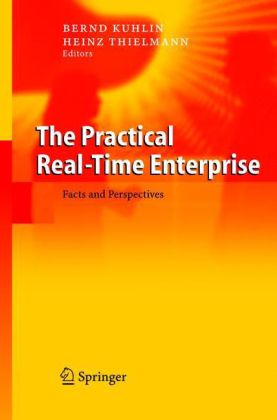 (2005)
(2005)
Towards the E-Enterprise: standards, networks, and co-operation strategies
Kuhlin, B./Thielmann, H. (eds.): The Practical Real Time Enterprise, Springer, Berlin. Online unter: http://www.springerlink.com/content/kj2584106546885g/
König, W., and Weitzel, T.
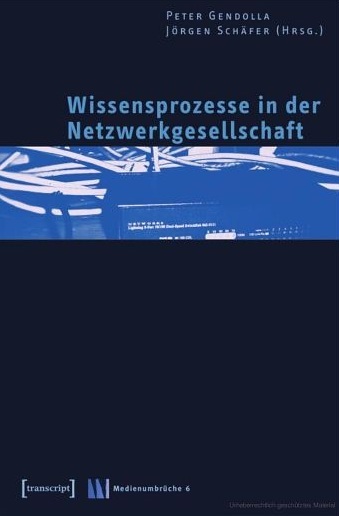 (2005)
(2005)
Ökonomische Analyse von Netzeffekten
In: Peter Gendolla, Jörgen Schäfer (Hg.): Wissensprozesse in der Netzwerkgesellschaft; transcript Verlag, S. 191-218. Erhältlich unter: http://www.amazon.de/Wissensprozesse-Netzwerkgesellschaft-Peter-Gendolla/dp/3899422767/ref=sr_1_1?ie=UTF8&qid=1299161856&sr=8-1
Weitzel, T., and König, W.
 (2005)
(2005)
Die Evolutionsschritte zum E-Enterprise: Standardisierung, Vernetzung und Kooperationsstrategien
Kuhlin, B./Thielmann, H. (Hrsg.): Real Time Enterprise in der Praxis, Springer, Berlin. Erhältlich unter: http://www.amazon.de/Real-Time-Enterprise-Praxis-Ausblick/dp/3540219080
König, W., and Beimborn, D.
(2004)
Zur Integrationstiefe in der zwischenbetrieblichen Zusammenarbeit
Stanoevska-Slabeva, Katarina (Hrsg.): Digital Economy - Anspruch und Wirklichkeit, Heidelberg, Berlin, New York (Springer)
Weitzel, T., Beimborn, D., and König, W.
(2004)
Outsourcing von Finanzprozessen
Management-Kompass IT-Strategie F.A.Z.-Institut , S. 12-17
Weitzel, T., and König, W.
 (2003)
(2003)
Zwischenbetriebliche Kooperationen und elektronische Märkte
in: Küting. K./Noack, H. (Hrsg.) (2003): Der große BWL-Führer - die 50 wichtigsten Strategien und Instrumente zur Unternehmensführung; F.A.Z.-Institut, Frankfurt (ISBN 3-89843-085-5). Erhältlich unter: http://www.amazon.de/BWL-Fuehrer-wichtigsten-Strategien-Instrumente-Unternehmensfuehrung/dp/3898430855/ref=sr_1_1?ie=UTF8&qid=1299163175&sr=8-1
Weitzel, T.
(2003)
Standardisierung und Standards
Taschenbuch der Wirtschaftsinformatik und Wirtschaftsmathematik, Frankfurt am Main (2.Auflage)
Weitzel, T., and von Westarp, F.
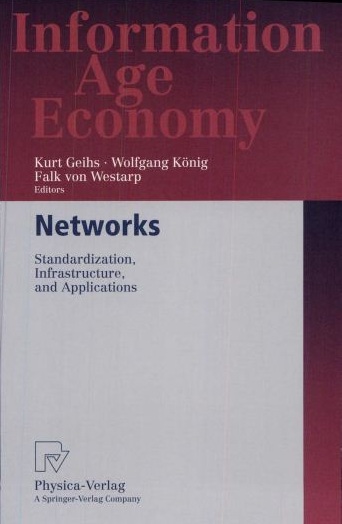 (2002)
(2002)
From QWERTY to nuclear power reactors: Historic battles for the standard
Geihs/Koenig/von Westarp (ed.): Networks - Standardization, Infrastructure, and Applications, Berlin (Springer) 2002, 33-61. Erhältlich unter: http://www.amazon.de/Networks-Standardization-Infrastructure-Applications-Information/dp/3790814490
Weitzel, T.
 (2001)
(2001)
Netzeffekttheorie
Lexikon der Wirtschaftsinformatik, Berlin
Weitzel, T., Buxmann, P., Ladner, F., and Kronenberg, R.
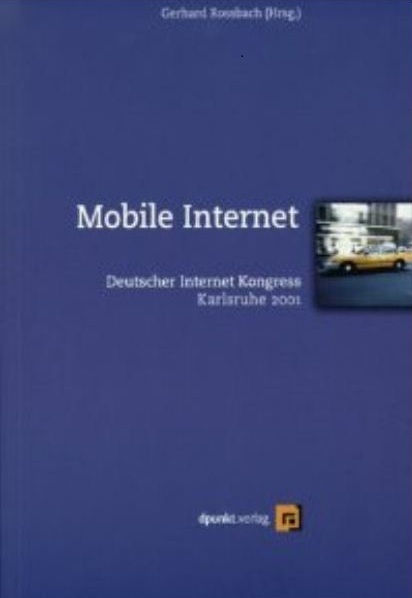 (2001)
(2001)
XML und EDI - Der Stand der Standardisierung
Rossbach, G. (Hrsg.): Mobile Internet, Karlsruhe 2001, 269-283. Erhältlich unter: http://www.amazon.de/Mobile-Internet-Deutscher-Internet-Kongress-Karlsruhe/dp/3898641430
Buxmann, P., and Weitzel, T.
 (2001)
(2001)
Electronic Data Interchange - Eine XML-Anwendung zum Rechnungsaustausch
Turowski, K./Fellner, K. (Hrsg.): XML in der betrieblichen Praxis - Standards, M, Heidelberg. Erhältlich unter: http://www.amazon.de/XML-betrieblichen-Praxis-Klaus-Turowski/dp/3932588916
Weitzel, T., Wendt, O., and von Westarp, F.
 (2001)
(2001)
Modeling Diffusion Processes in Networks
Networks - Standardization, Infrastructure, and Applications, Berlin (Springer ) 2001, 3-31. Erhältlich unter: http://www.amazon.de/Networks-Standardization-Infrastructure-Applications-Information/dp/3790814490
König, W., Weitzel, T., Buxmann, P., and von Westarp, F.
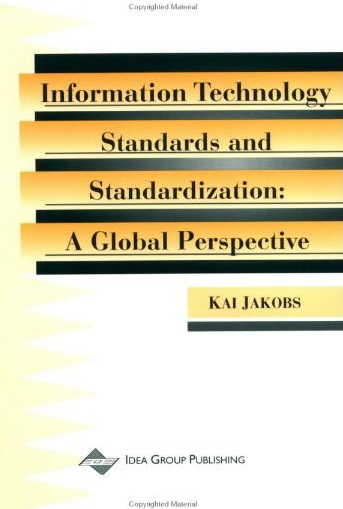 (2000)
(2000)
The Standardization Problem in Networks - A General Framework
Information Technology Standards and Standardization: A Global Perspective
von Westarp, F., Weitzel, T., Buxmann, P., and König, W.
(1999)
Innovationen im Bereich der B2B-Kommunikation - Fallstudien und technische Lösungen zu WebEDI
Augsburg
Rannenberg, K.
(1998)
Datenschutz als Innovationsmotor statt als Technikfeind
Der neue Datenschutz - Datenschutz in der Informationsgesellschaft von morgen, Neuwied